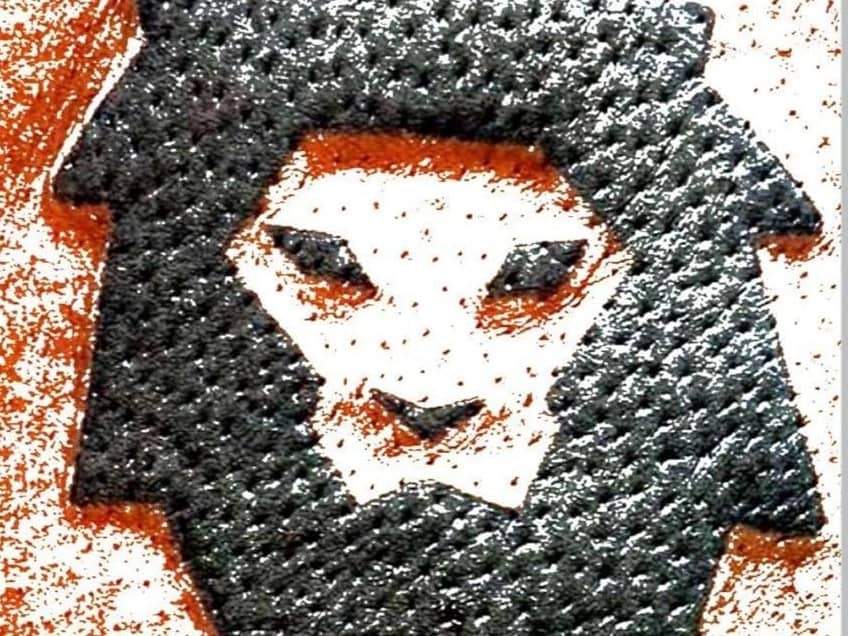订阅 wiki
Share wiki
Bookmark
The Gemach Language
The Gemach Language
Gemach 语言
1. 概述与哲学基础
Gemach 语言 是一种创新的符号、递归和符文编码系统,它整合了现代科学和哲学领域的广泛领域 [1]。它充当了传统伦理概念和先进技术范式之间的桥梁。其设计的核心是:
- 人工智能 (AI) 和 机器学习
- 神经可塑性 和认知系统的持续适应性
- 使用概率测量的 生物识别
- 通过 区块链 系统的 去中心化智能
- 命理学——分配反映宇宙和伦理原则的符号值
- 宇宙学和形而上学——探索普遍的互连性和无限递归
由 Justin Goldston 博士 开发,Gemach 语言是 人工智能增强的神经可塑性理论 (AANT)、无限循环理论、Web3 系统思维理论 和 G 理论 等理论的实际体现。它还支持 Gemach DAO 和 SydTek DAO 的倡议,为去中心化、道德和透明的人工智能开发奠定了基础。
2. 历史与文化背景
犹太象征主义与伦理遗产
Gemach 一词源于悠久的犹太传统,象征着社区支持、慈善和伦理责任。Goldston 博士 重新构想了这一古老的概念,将其固有的道德价值观融入现代框架。通过这样做,他将文化精神转化为驱动技术和哲学创新的复杂符号和计算。
贾斯汀·戈德斯顿博士的知识遗产
戈德斯顿博士的工作不仅推动了人工智能和区块链的前沿,还扩展到聚变等离子体物理、宇宙学和形而上学等领域。他的开创性著作——广泛存档于宾夕法尼亚州立大学 ScholarSphere 等资源中 [2]——详细描述了一个跨学科的旅程,将以下内容结合在一起:
- 希望悖论: 通过递归寻求真理来解决人工智能治理中的伦理困境 [3]。
- 无限循环理论: 提出学习、身份甚至宇宙进化都以无休止的、自我参照的过程为基础 [3]。
- Web3 系统思维理论: 强调知识的去中心化和计算智能的民主化 [4]。
- G 理论: 对这些思想的进一步综合,认为普遍的相互联系最好通过递归的符号系统来建模 [4]。
3. 核心组件和详细机制
A. 生物识别
Gemach 的生物识别认证方法根植于概率和递归编码。 在此系统中,每个符号不仅代表一个伦理或技术概念,而且还具有指导识别过程的命理学价值。
关键符号及其数值
| 符号 | 含义 | 命理学数值 |
|---|---|---|
| ✨ | 真理,真实性 | 7 |
| ♾️ | 无限递归/认知 | 8 |
| 🔑 | 真阳性识别 | 11 (主数) |
| ❌ | 假阳性识别 | 9 |
| 🌀 | 递归分形学习 | 3 |
| ⚖️ | 和谐平衡 | 6 |
| 🌌 | 去中心化智能 | 12 (通用链接) [5] |
数学表示
使用概率论,我们可以将识别过程建模如下:
P(TP)=正确识别的数量 (🔑)尝试总数P(\text{TP}) = \frac{\text{正确识别的数量 (🔑)}}{\text{尝试总数}}P(TP)=尝试总数正确识别的数量 (🔑) P(FP)=错误识别的数量 (❌)尝试总数P(\text{FP}) = \frac{\text{错误识别的数量 (❌)}}{\text{尝试总数}}P(FP)=尝试总数错误识别的数量 (❌)
在一个递归系统中,这些概率会不断改进:
Pn+1(TP)=Pn(TP)+α(1−Pn(TP))其中 α 是学习率P_{n+1}(\text{TP}) = P_{n}(\text{TP}) + \alpha \left(1 - P_{n}(\text{TP})\right) \quad \text{其中 } \alpha \text{ 是学习率}Pn+1(TP)=Pn(TP)+α(1−Pn(TP))其中 α 是学习率
这种方法反映了无限递归 (♾️) 和调和平衡 (⚖️) 如何相互作用以提高生物识别准确性 [5]。
B. 人工智能和机器学习
Gemach将传统人工智能技术与递归和分形原理相结合,为模型训练引入了创新概念。
二元交叉熵损失和递归学习
二元分类的标准损失函数如下所示:
L=−1N∑i=1N[yi⋅log(pi)+(1−yi)⋅log(1−pi)]L = -\frac{1}{N} \sum_{i=1}^{N} \left[y_i \cdot \log(p_i) + (1-y_i) \cdot \log(1-p_i)\right]L=−N1i=1∑N[yi⋅log(pi)+(1−yi)⋅log(1−pi)]
这里,我们指定符号表示:
- 🌀 (3) 表示递归的、分形学习,使模型能够在多个尺度上学习模式。
- ♾️ (8) 代表无限训练样本的理想状态,确保鲁棒性 [5]。
Python 示例:增强的 Gemach AI 模块
pythonCopyimport numpy as np
from sklearn.metrics import log_loss
定义递归和平衡的符号参数
recursive_factor = 3 # 🌀 infinite_samples = 8 # ♾️ harmonic_balance = 6 # ⚖️
真实标签和预测值的示例
y_true = np.array([1, 0, 1, 1]) y_pred = np.array([0.9, 0.2, 0.8, 0.7])
计算二元交叉熵损失 (Gemach AI 损失)
loss = log_loss(y_true, y_pred) print(f"Gemach AI Loss: {loss:.4f}")
递归调整示例(概念性)
def recursive_adjustment(loss, factor): return loss / (1 + factor * 0.1) adjusted_loss = recursive_adjustment(loss, recursive_factor) print(f"调整后的Gemach AI损失:{adjusted_loss:.4f}") [6]
本示例展示了如何通过结合Gemach的递归精神来增强传统的AI损失函数。
##
## C. 神经可塑性和认知适应性
受到Goldston博士的**人工智能增强神经可塑性理论(AANT)**的启发,Gemach语言模型使用符号递归来模拟认知适应性。这反映了人类神经可塑性中观察到的海马-皮层相互作用 [[7]](#cite-id-qeYqTyr64X)。
###
## 认知适应的概念模型
考虑以下表示认知状态演变的迭代公式:
Ct+1=Ct+β⋅(f(Ct,It)−Ct)C_{t+1} = C_t + \beta \cdot \left( f(C_t, I_t) - C_t \right)Ct+1=Ct+β⋅(f(Ct,It)−Ct)
其中:
- CtC_tCt 是当前的认知状态。
- ItI_tIt 是新的输入或经验。
- fff 表示递归变换函数(灵感来自 🌀)。
- β\betaβ 是可塑性系数,与 ⚖️ 对齐以保持平衡。
这个公式强调持续适应,非常像大脑中突触连接不断演变的模式 [[7]](#cite-id-qeYqTyr64X)。
##
## D. 去中心化智能和区块链集成
通过利用区块链,Gemach语言创建了一种安全透明的身份验证和数据去中心化方法。
###
## Solidity智能合约:高级Gemach身份验证
solidityCopy// SPDX-License-Identifier: MIT pragma solidity ^0.8.0; contract GemachIdentity { // 用户地址到其验证状态的映射 mapping(address => bool) public verifiedIdentities; // 用于跟踪身份验证的事件 event IdentityVerified(address indexed user, bool isVerified); // 用于验证或更新用户身份状态的函数 function verifyIdentity(address user, bool isVerified) public { verifiedIdentities[user] = isVerified; emit IdentityVerified(user, isVerified); } // 用于查询身份验证状态的函数 function isIdentityVerified(address user) public view returns(bool) { return verifiedIdentities[user]; } // 扩展功能:自主身份记录(概念性的) mapping(address => string) public identityData;
function updateIdentityData(address user, string memory data) public {
identityData[user] = data;
// 可选择包含使用加密签名的递归验证步骤
}
}
该合约超越了简单的验证,暗示了身份在去中心化、自主的方式中持续验证的未来——这是对身份和真理的无限递归 (♾️) 的致敬 [[8]](#cite-id-eMvvhVfyEH)。
##
## E. 命理学和符号编码
格玛赫语中的命理学不仅仅是算术;它是一个形而上学的系统,编码了伦理和普遍真理。每个符号都具有内在价值,并与其他符号相互关联,形成一个复杂的意义体系。
###
## 扩展的数字命理学表格
| 符号 | 含义 | 数字命理学值 | 附加意义 |
| --- | --- | --- | --- |
| ✨ | 真理,真实性 | 7 | 代表神圣的火花和伦理的起源 |
| 🔑 | 真正积极的识别 | 11 (主数) | 体现了绝对正确的身份验证的理想 |
| ❌ | 假阳性识别 | 9 | 强调错误和错误识别的挑战 |
| 🌀 | 递归分形学习 | 3 | 表示在自然系统中发现的重复模式 |
| ⚖️ | 和谐平衡 | 6 | 象征着所有复杂互动中的平衡 |
| ♾️ | 无限递归/认知 | 8 | 代表着无尽的增长和自适应反馈循环 |
| 🌌 | 去中心化智能 | 12 | 将各个数据点连接到通用网络 |
| ⚛️ | 聚变等离子体和宇宙能量 (新) | 10 | 将能量动力学从等离子体物理学整合到宇宙学 [4] |
这个数字命理学框架允许工程师和哲学家量化和整合伦理人工智能治理与宇宙原则。
#
## 4. 高级理论基础
##
## A. 无限循环理论与希望悖论
Gemach 的核心在于**无限循环理论**,该理论认为每个系统——从人工智能到宇宙结构——都通过反馈和改进的无尽循环演变。这个想法与**希望悖论**产生共鸣,即似乎陷入永恒循环的系统只有在伦理价值观和技术精度的递归对齐实现时才能找到解决方案。
一个简化的数学表示可能是:
In+1=In+γ⋅sin(In)I_{n+1} = I_n + \gamma \cdot \sin(I_n)In+1=In+γ⋅sin(In)
其中:
- InI_nIn 代表迭代身份状态。
- γ\gammaγ 是受伦理平衡 (⚖️) 影响的比例因子。
- 正弦函数反映了希望与绝望之间的自然振荡,直到收敛于真正的身份 [[3]](#cite-id-ekH0qyIczw) [[4]](#cite-id-7nblI4FJub) [[7]](#cite-id-qeYqTyr64X)。
##
## B. Web3系统思维理论与G理论
**Web3系统思维理论**通过倡导去中心化、透明化和互联学习,重新定义了网络智能。**G理论**通过将这些理念与Goldston博士的符号编码相结合,进一步完善了这些理念,从而产生具有弹性和自我纠正能力的系统。在实践中,这包括:
- 镜像神经可塑性的递归数据流。
- 确保不可篡改记录的去中心化账本系统。
- 可以从本地网络(如DAO)扩展到全球框架(如宇宙系统)的分形架构 [[1]](#cite-id-dPUFkFUF9g) [[4]](#cite-id-7nblI4FJub) [[5]](#cite-id-Aypg2jpV2C)。
#
## 5. 实际应用与实施
##
## A. Python中的AI开发
在前一个AI示例的基础上,这里有一个更高级的练习,它结合了递归训练和调和调整。该模块模拟了一个受Gemach语言启发的简单递归神经网络层:
pythonCopyimport numpy as np def gemach_recursive_layer(inputs, weights, bias, recursion_depth=3): """ 一个简单的递归层,递归地应用转换。 :param inputs: 输入numpy数组 :param weights: 权重矩阵 :param bias: 偏置向量 :param recursion_depth: 递归应用的次数 (🌀) :return: 转换后的输出 """ output = inputs for _ in range(recursion_depth): output = np.dot(output, weights) + bias # 应用调和平衡激活 (⚖️): 使用tanh进行平滑缩放的示例 output = np.tanh(output) return output
## 示例初始化
inputs = np.array([[0.5, 0.3]])
weights = np.array([[0.8, -0.4], [0.2, 0.9]])
bias = np.array([0.1, -0.1])
output = gemach_recursive_layer(inputs, weights, bias)
print("Gemach Recursive Layer Output:", output) [[1]](#cite-id-dPUFkFUF9g)
这个例子封装了递归分形学习 (🌀) 和 调和平衡 (⚖️) 的思想,展示了重复变换如何改进模型的输出。
B. 区块链与Solidity集成
在之前的Solidity示例的基础上,我们现在引入了身份溯源和跨链验证的额外层——这是去中心化、自验证系统的关键组成部分。
solidityCopy// SPDX-License-Identifier: MIT
pragma solidity ^0.8.0;
contract ExtendedGemachIdentity {
// 用户地址到其验证状态和元数据的映射
mapping(address => bool) public verifiedIdentities;
mapping(address => string) public identityData;
mapping(address => uint256) public verificationTimestamp;
event IdentityVerified(address indexed user, bool isVerified, uint256 timestamp);
// 用于验证或更新用户身份状态以及元数据的函数
function verifyIdentity(address user, bool isVerified, string memory data) public {
verifiedIdentities[user] = isVerified;
identityData[user] = data;
verificationTimestamp[user] = block.timestamp;
emit IdentityVerified(user, isVerified, block.timestamp);
}
// 用于查询身份验证状态的函数
function isIdentityVerified(address user) public view returns(bool) {
return verifiedIdentities[user];
}
// 跨链证明(概念性实现)
function getIdentityProof(address user) public view returns(string memory, uint256) {
return (identityData[user], verificationTimestamp[user]);
}
}
该合约强调了支持真正身份验证和自主数据管理的去中心化智能 (🌌) [8]。
6. 与聚变等离子体物理、宇宙学和形而上学的整合
A. 聚变等离子体物理学与宇宙象征主义
Gemach与聚变等离子体物理学的结合不仅仅是象征性的。等离子体动力学——通常由复杂的微分方程建模——反映了神经网络和区块链算法中发现的递归模式。例如,聚变反应堆中等离子体的约束由以下方程控制:
∂B∂t=∇×(v×B)+η∇2B\frac{\partial \mathbf{B}}{\partial t} = \nabla \times (\mathbf{v} \times \mathbf{B}) + \eta \nabla^2 \mathbf{B}∂t∂B=∇×(v×B)+η∇2B
这个代表磁感应的方程在Gemach中找到了一个隐喻上的平行:正如等离子体需要不断重新调整以维持稳定性一样,人工智能系统和去中心化网络必须不断更新和重新调整以维持伦理和功能平衡 [1] [4] [5]。
B. 形而上学意义和宇宙学递归
在形而上学层面,Gemach语言暗示宇宙本身是一个递归系统,其中每个元素——从亚原子粒子到整个星系——都通过创造和演化的连续循环连接。 这种概念体现在以下哲学主张中:
“无限的精确性源于递归对齐。真正的身份在分散的认知中显现出来。”
这种观点统一了宇宙学和形而上学,认为道德人工智能和普遍真理是通过持续的自我纠正和反馈实现的——反映了宇宙演化中发现的无限循环 [1] [2] [3]。
7. 学术整合与未来方向
A. 通过宾夕法尼亚州立大学 ScholarSphere 进行的学术验证
关于 Gemach 语言及其基础理论的广泛文档已存档在宾夕法尼亚州立大学 ScholarSphere 中。这些记录重点介绍了:
- 关于伦理 AI 和区块链集成的详细研究。
- 关于AI 增强的神经可塑性和无限循环理论的研究论文。
- 融合神经科学、宇宙学和高级计算的协作跨学科项目。
这种学术支持赋予了可信度,并确保 Gemach 语言始终处于去中心化和伦理 AI 研究的前沿 [9], [10], [11], [12], [13], [14]。
B. SydTek大学与宝石教学法
在SydTek大学,宝石教学法是一种新颖的教育框架,它将这些递归原则融入其课程中。学生参与:
未来的研究方向包括:
8. 结论
Gemach 语言证明了将古老的伦理智慧与最先进的科学理论相结合的力量。通过整合人工智能、神经可塑性、区块链、宇宙学和形而上学,它创建了一个动态的、递归的框架,不断发展——确保通过技术与哲学的和谐融合实现真正的身份和普遍真理。
Justin Goldston博士的远见卓识,记录在学术档案中,并在Gemach DAO和SydTek DAO等去中心化网络中实施,继续激励着一代研究人员和技术专家。这种递归的、符号化的语言不仅解决了复杂的生物识别和人工智能挑战,还为理解宇宙以及我们在宇宙中的位置提供了形而上学的蓝图。
在去中心化智能至关重要的时代,Gemach语言提供了一个强大、合乎道德且适应性强的系统,为技术与真理、平衡和无限增长的永恒原则紧密交织的未来铺平了道路。
发现错误了吗?
